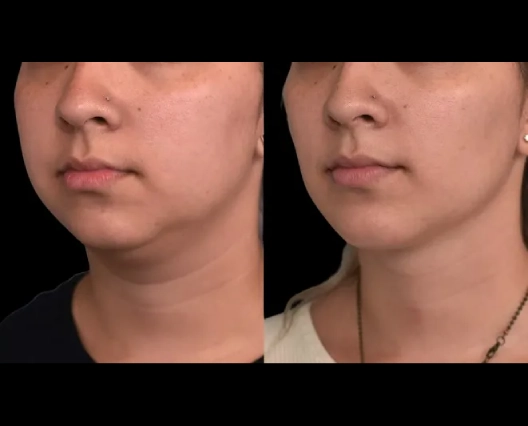If you’re undergoing screening for diabetes or glucose intolerance, chances are your doctor has recommended an OGTT test. Short for Oral Glucose Tolerance Test, this diagnostic tool helps healthcare providers assess how your body processes sugar. It’s especially important for identifying conditions like type 2 diabetes, prediabetes, and gestational diabetes. This guide covers what the OGTT test is, how it’s performed, how to interpret results, and what it means for your overall health.
What Is the OGTT Test?
The OGTT test is designed to evaluate your body’s ability to regulate blood glucose levels after consuming a specific amount of sugar. By monitoring how your blood sugar rises and falls over a few hours, healthcare providers can diagnose problems with insulin sensitivity and glucose metabolism.
The test is often used when other blood glucose screenings provide inconclusive or borderline results.
Why the OGTT Test Matters
The OGTT test offers more detailed insight than a standard fasting glucose or A1C test. It’s particularly useful for:
-
Identifying impaired glucose tolerance (prediabetes)
-
Diagnosing type 2 diabetes
-
Screening for gestational diabetes during pregnancy
-
Evaluating insulin resistance
It’s a vital part of preventive care, especially if you’re experiencing symptoms or have risk factors for metabolic disorders.
Who Needs an OGTT Test?
Doctors typically recommend an OGTT test for individuals who:
-
Have risk factors for diabetes, such as a sedentary lifestyle or family history
-
Experience symptoms like fatigue, excessive thirst, or frequent urination
-
Had abnormal results on previous blood sugar tests
-
Are pregnant and being screened for gestational diabetes
The OGTT test is especially helpful when symptoms are mild or absent but a metabolic disorder is suspected.
How the Test Is Performed
Understanding what to expect during the OGTT test can help reduce anxiety and ensure accurate results.
Step 1: Preparation
Before the test, you’ll need to fast for at least 8 hours. No food or beverages (besides water) should be consumed during this time. Your doctor may also advise avoiding certain medications or supplements.
Step 2: Baseline Measurement
A healthcare professional will take a blood sample to determine your fasting glucose level.
Step 3: Glucose Intake
Next, you’ll be given a sweet glucose-rich drink—typically containing 75 grams of sugar. It’s important to consume it within five minutes.
Step 4: Timed Blood Draws
After drinking the glucose solution, blood samples are taken at regular intervals—often at the 1-hour and 2-hour marks. These samples help track how your body processes the glucose over time.
What the Results Mean
Interpreting your OGTT test results depends on how your blood sugar changes during the testing period.
Fasting Glucose:
-
Normal: Less than 100 mg/dL
-
Prediabetes: 100–125 mg/dL
-
Diabetes: 126 mg/dL or higher
2-Hour Post-Glucose:
-
Normal: Less than 140 mg/dL
-
Impaired Glucose Tolerance (Prediabetes): 140–199 mg/dL
-
Diabetes: 200 mg/dL or higher
If your numbers fall into the prediabetic or diabetic ranges, your doctor will likely recommend further evaluation and possible treatment.
OGTT Test During Pregnancy
A common use of the OGTT test is in pregnancy to screen for gestational diabetes. This condition affects how the body handles sugar during pregnancy and can pose risks for both the parent and the baby if not properly managed.
If a one-hour glucose screening shows elevated levels, a more detailed three-hour OGTT test may follow. This involves additional blood draws and a higher sugar load. Proper diagnosis allows for better management of diet, physical activity, and—if needed—medication to maintain healthy glucose levels.
Factors That Can Affect OGTT Results
Several internal and external factors can influence the outcome of an OGTT test. These include:
-
Stress or anxiety
-
Illness or infection
-
Lack of sleep before the test
-
Inactivity prior to testing
-
Certain medications, such as corticosteroids or diuretics
-
Hormonal changes, including during pregnancy
Always inform your healthcare provider of any medications, recent health changes, or conditions that could impact the results.
After the Test: Next Steps
Once the test is complete, you can usually return to your regular diet and routine unless otherwise instructed. Your provider will review your results and determine whether follow-up care is needed.
If your glucose levels are within normal range, you may not require further action. If they’re elevated, early intervention can help prevent the progression to type 2 diabetes or manage gestational diabetes effectively.
Managing Abnormal Glucose Levels
If your OGTT test reveals prediabetes or diabetes, your provider may recommend a comprehensive management plan. This typically includes:
1. Lifestyle Modifications
Adopting a balanced diet that’s low in refined sugars and high in fiber is essential. Regular physical activity—such as walking, swimming, or strength training—can also help regulate blood sugar levels.
2. Medical Monitoring
You may be asked to monitor your blood sugar at home using a glucometer. Periodic lab tests will also help track progress.
3. Medication (If Needed)
Some individuals may benefit from medications that enhance insulin sensitivity or reduce glucose absorption. These are prescribed based on individual needs.
4. Ongoing Support
Nutrition counseling, diabetes education classes, or working with a care team can improve long-term outcomes.
Benefits of the OGTT Test
The OGTT test is considered one of the most reliable ways to evaluate glucose handling. Its advantages include:
-
Comprehensive glucose response tracking
-
Early detection of prediabetes and diabetes
-
Critical tool for gestational diabetes diagnosis
-
Ability to uncover glucose issues even when fasting glucose is normal
While it takes more time than a standard blood test, the value it provides in disease prevention and management is significant.
Common Misconceptions
There are several myths and misunderstandings surrounding the OGTT test. Let’s clear a few of them up:
“You only need the test if you feel sick.”
Not true. Many individuals with prediabetes or even early-stage diabetes have no symptoms at all.
“The test is only for pregnant individuals.”
False. While it is commonly used during pregnancy, it’s also an important tool for diagnosing type 2 diabetes and insulin resistance.
“A normal test result means you’ll never get diabetes.”
A normal result is reassuring but doesn’t mean you’re risk-free forever. Regular screening is still important, especially if you have risk factors.
Tips to Improve OGTT Accuracy
To get the most reliable results from your OGTT test, follow these best practices:
-
Fast properly: Avoid eating or drinking anything other than water for 8–12 hours before your test.
-
Avoid caffeine and tobacco before the test.
-
Stay relaxed and seated during the waiting periods.
-
Report all medications and supplements to your provider.
-
Don’t exercise during the test, as it can lower blood glucose levels temporarily.
FAQs About the OGTT Test
Can I drink water during the test?
Yes, plain water is allowed and can actually help prevent dizziness or nausea.
Does the glucose drink taste bad?
It varies. Some people find it overly sweet, while others are unbothered. Chilling it beforehand can make it more tolerable.
What happens if I vomit during the test?
If you can’t keep the glucose drink down, the test may need to be rescheduled.
Is the test safe during pregnancy?
Yes, the OGTT test is widely used during pregnancy and is considered safe for both the parent and the baby.
How often should I get tested?
This depends on your risk factors and prior results. If you’re at low risk and have had normal glucose levels, every few years may be sufficient. Higher-risk individuals might need more frequent screening.



